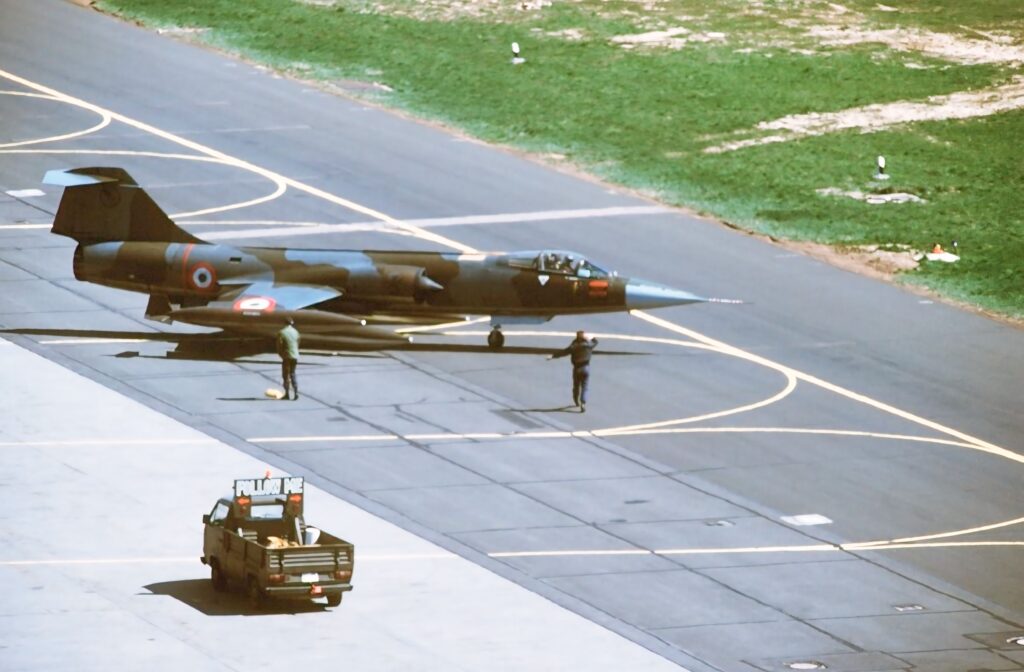
In 1988, the Lockheed F-104 Starfighter was nearing the end of its long and turbulent service life in Europe. Among the countries still operating the type was Germany, where the F-104 had become both a symbol of Cold War readiness and a reminder of the challenges that came with adapting American aircraft to European missions. The designation “F-104 AM” referred to the aircraft used by the German Air Force (Luftwaffe) and, in some cases, upgraded to meet NATO standards of the late 1980s.
By 1988, most Luftwaffe Starfighters were based in western Germany, at airbases such as Büchel, Memmingen, and Nörvenich. These jets had served for over two decades, first entering German service in the early 1960s under the massive procurement program known as the “Deal of the Century.” The F-104 had replaced several earlier types and was adapted for multiple roles—interception, reconnaissance, and nuclear strike—depending on squadron assignments.
The F-104 was a striking machine. With its needle-like fuselage, short trapezoidal wings, and sharply pointed nose, it looked like it was designed more for space than for atmospheric flight. It could exceed twice the speed of sound and climb at an impressive rate. However, its performance came at a cost. The Starfighter demanded precision from its pilots; any misjudgment in speed or angle during takeoff or landing could be unforgiving.
By the late 1980s, German F-104 units were transitioning to newer aircraft such as the Panavia Tornado, but many squadrons continued to train with Starfighters for readiness and maintenance of NATO deterrence missions. At this point, the aircraft were largely focused on ground-attack and reconnaissance tasks rather than pure interception. Some had been modified with improved avionics and navigation systems, giving them better reliability in all weather conditions—a significant improvement over the early years of service, when mechanical and procedural issues contributed to a high accident rate.
For the German Air Force, 1988 represented both continuity and closure. The Cold War was still in full effect, and the Starfighter played its part as a quick-reaction strike platform capable of delivering tactical nuclear weapons if required. Yet, behind the scenes, the Luftwaffe was already preparing for the end of an era. Maintenance crews were cannibalizing older airframes for parts, and pilots transferring to Tornado units were completing their final Starfighter flights with a mix of nostalgia and relief.
The atmosphere on German bases that year reflected the aircraft’s dual legacy. Technicians still took pride in keeping the sleek jets operational, despite their age. Pilots respected the aircraft for its speed and agility, but they also understood its reputation as a difficult and occasionally dangerous machine. Each successful sortie felt like an accomplishment born of skill and discipline.
By the end of 1988, only a few F-104s remained in regular service in Germany. Within a year, most were retired or transferred to training and display roles. When the last Starfighter left the flight line, it marked the close of a significant chapter in German aviation—one that had spanned from postwar rebuilding to the brink of German reunification.
The F-104 AM in Germany during 1988 stood as a relic of Cold War intensity and aerospace ambition: fast, unforgiving, and unforgettable.


